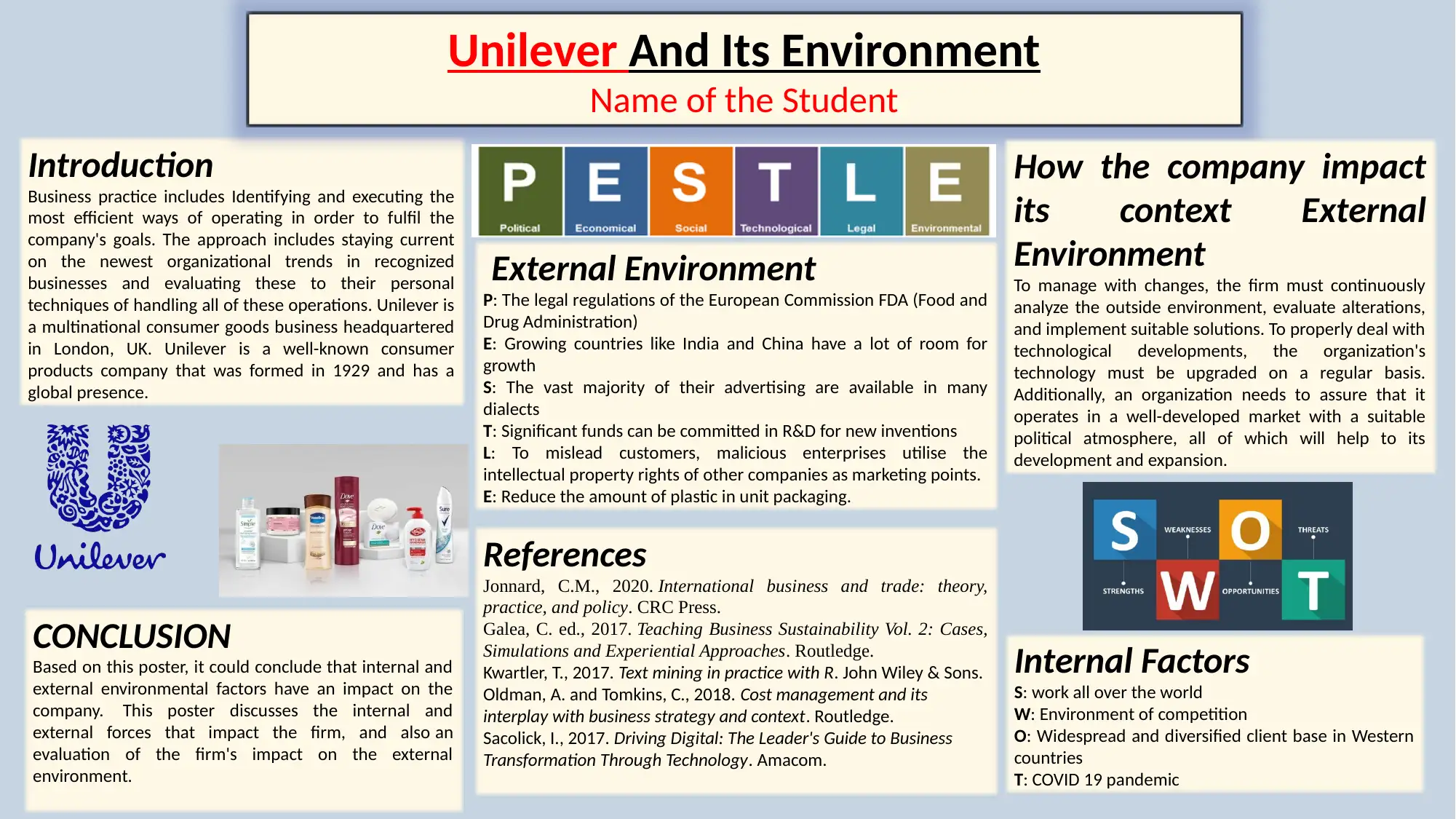Unilever's Business Environment: Internal/External Factors & Impact
VerifiedAdded on 2023/06/18
|1
|442
|341
Case Study
AI Summary
This case study examines Unilever, a multinational consumer goods company, focusing on the internal and external environmental factors that impact its business operations. The analysis includes a look at the external environment, considering political (legal regulations), economic (growth in developing countries), social (advertising in multiple dialects), technological (R&D investment), legal (intellectual property rights), and environmental (plastic reduction) factors. It also covers internal factors, highlighting strengths, weaknesses, opportunities, and threats (SWOT), including the company's global reach, competitive environment, diversified client base, and the impact of the COVID-19 pandemic. The study concludes by evaluating Unilever's impact on its external environment, emphasizing the importance of continuous analysis and adaptation to technological advancements and market dynamics. The references provided support the analysis with insights from various business and management perspectives.







![[object Object]](/_next/static/media/star-bottom.7253800d.svg)